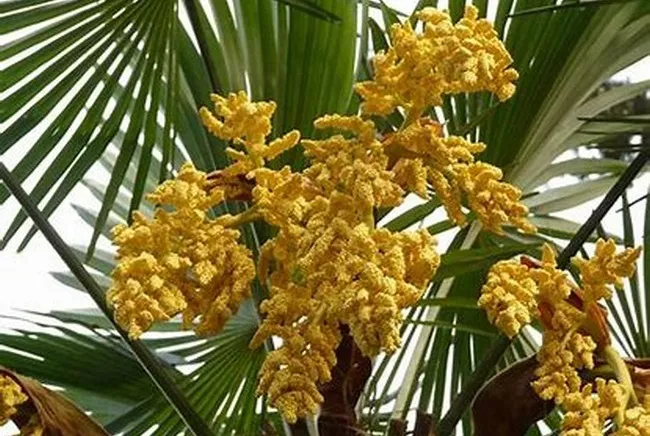Palm trees are iconic plants found in tropical and subtropical regions around the world. Their elegant fronds and towering trunks make them a symbol of paradise and tropical beauty. However, many people may not know that palm trees, like other plants, also go through a flowering process. This article will explore what it means when a palm tree flowers, detailing the significance, process, and implications of this event.
Understanding Palm Tree Flowering
The Basics of Palm Tree Reproduction
Palm trees, like all plants, reproduce through flowers. However, their flowering process is unique compared to many other plants. Most palm trees are dioecious, meaning they have separate male and female plants. In some cases, palms are monoecious, with both male and female flowers on the same plant. The flowering of a palm tree is essential for the production of seeds and the continuation of the species.
Why Do Palm Trees Flower?
Flowering is a crucial part of a palm tree’s life cycle. It allows the plant to reproduce and ensure the survival of its species. When a palm tree flowers, it produces both pollen and ovules, which are necessary for fertilization. Successful fertilization leads to the development of seeds, which can grow into new palm trees.
The Flowering Process
Flowering Stages
Preparation: Before a palm tree begins to flower, it goes through a preparatory phase. This phase involves the development of flower buds, which are initially small and inconspicuous. The tree may show subtle changes, such as a slight swelling in the area where the flowers will emerge.
Emergence: As the flower buds mature, they begin to emerge from the tree. Palm tree flowers are typically small and may not be very showy. They are often grouped together in inflorescences, which are clusters of flowers on a single stalk.
Blooming: Once the flowers have emerged, they begin the blooming phase. During this time, the flowers open up to release pollen and receive pollen from other flowers. This phase can last from a few days to several weeks, depending on the species of palm tree.
Fertilization: Fertilization occurs when pollen from the male flowers reaches the female flowers. This can be facilitated by wind, insects, or other pollinators. Once fertilization is successful, the ovules develop into seeds.
Seed Development: After fertilization, the flowers begin to wither, and the seeds start to develop. The seeds are typically enclosed in a fruit or a seed pod, which provides protection until they are ready to germinate.
Types of Palm Tree Flowers
Palm trees produce different types of flowers, depending on the species. Some common types include:
Small and Inconspicuous Flowers: Many palm trees produce small, delicate flowers that are not very noticeable. These flowers are often grouped in clusters or spikes.
Showy Flowers: Some palm trees, like the Royal Palm, produce more showy flowers that are larger and more colorful. These flowers can be quite striking and add visual interest to the tree.
Fruiting Flowers: In addition to flowers that are involved in reproduction, some palm trees produce flowers that develop into fruits. These fruits contain the seeds and are often used for food or other purposes.
Significance of Flowering
Ecological Importance
Palm tree flowering has several ecological benefits. It provides food and habitat for various animals, including insects and birds. Pollinators such as bees and butterflies are attracted to the flowers, helping with the pollination process. The seeds produced after flowering are an essential food source for many animals and contribute to the regeneration of palm forests.
Cultural and Economic Significance
In many cultures, palm trees and their flowers have symbolic meanings. They are often associated with prosperity, peace, and tropical beauty. In some regions, palm tree flowers are used in traditional ceremonies or as decorative elements in festivals.
Economically, palm trees are valuable crops. They provide essential products such as coconuts, dates, and palm oil. The flowering process is a critical part of the production of these products, as it leads to the development of fruits and seeds.
See Also: The Allure of Palm Tree Flowers: A Comprehensive Exploration
Factors Affecting Flowering
Environmental Conditions
The flowering of palm trees can be influenced by various environmental factors, including:
Temperature: Palm trees typically flower in response to temperature changes. They may require specific temperature ranges to trigger flowering.
Watering: Adequate watering is essential for the health of palm trees and their ability to flower. Both overwatering and underwatering can affect the flowering process.
Soil Quality: The quality of the soil can impact the flowering of palm trees. Well-drained, nutrient-rich soil is ideal for promoting healthy flower development.
Tree Health
The overall health of the palm tree also affects its ability to flower. A healthy tree is more likely to produce flowers and seeds. Common issues that can impact flowering include pests, diseases, and nutrient deficiencies. Regular care and maintenance can help ensure that the tree remains healthy and capable of flowering.
Conclusion
The flowering of a palm tree is a fascinating and essential part of its life cycle. It represents the plant’s reproductive phase and has significant ecological, cultural, and economic implications. By understanding the process and significance of palm tree flowering, we gain a deeper appreciation for these iconic plants and their role in our world. Whether in tropical forests or urban landscapes, the beauty and importance of palm trees continue to captivate and inspire.


